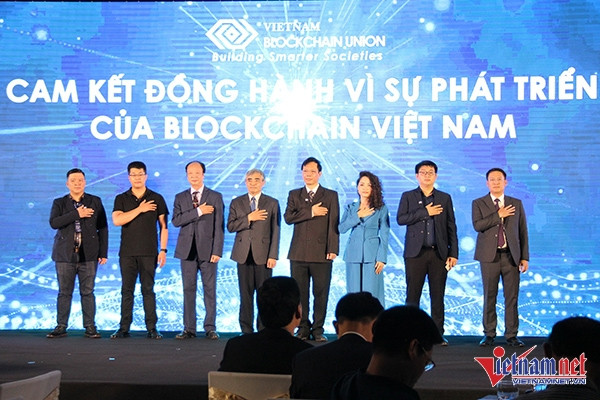Stable environment, young workforce put Vietnam on the global high-tech map, helping Intel overcome the chip crisis.
In the interview with VnExpressMr. Steve Long, General Manager of Asia-Pacific and Japan of Intel, shared about the important contributions of the factory in Vietnam in overcoming the global chip crisis; trend metaverse and the future of technology blockchain from the hardware manufacturer’s point of view.

Mr. Steve Long, General Manager, Asia-Pacific and Japan, Intel. Image: Intel UK
Vietnam is capable of producing advanced technology products
According to Mr. Steve Long, Vietnam has become a favorite destination for foreign businesses, especially technology corporations like Intel. “A stable socio-political environment, increasingly liberalized trade and investment policies, and a young and talented workforce are some of the reasons why Vietnam is so attractive,” he said.
Mr. Long said that Intel’s presence in the manufacturing sector also contributed to putting Vietnam’s name on the high-tech map. “Vietnam has the ability to set up the necessary infrastructure and policies to support advanced manufacturing activities,” Long affirmed.
Intel Products Vietnam (IPV) is the largest assembly and testing factory in the Intel network. With more than 2,800 employees and an investment of $1.5 billion, it is the largest American high-tech company in Vietnam. As of 2021, IPV ships more than three billion products to Intel customers worldwide after 15 years of operation.

Engineers are working in Intel Products Vietnam factory. Image: Intel
During the global chip crisis, IPV not only maintained stable operations, but also made many innovative contributions to help it fill the shortage in semiconductors. One of the key initiatives is to improve the substrate treatment process at the assembly and inspection plant.
According to an Intel representative, the basic element that almost all high-end processors in the world need is a film-forming microfilm substrate from Ajinomoto (ABF). Before leaving the factory, the computer chip is covered between a substrate and a heatsink to form a complete processor. This “packaging” helps protect the chip and creates an electrical connection between the processor and the computer’s motherboard. Over the years, Intel has mounted certain capacitors on one side of a substrate, and mounting them on the other is vendor dependent. Now, with a new initiative, Intel has been able to mount these components on both sides of the substrate at its Vietnam Assembly and Inspection (VNAT) plant.
Kim Huat Ooi, Vice President and General Director of Intel Products Vietnam said: “This initiative helps Intel complete chip assembly 80% faster and supports substrate suppliers who are facing shortages. supply shortage”. The new approach of the Intel Vietnam factory helps the company add millions of chips every year, opening the prospect of increasing more than $2 billion in profit for Intel.
Mr. Steve Long believes that at least until 2024, the stability between supply and demand in the supply chain can be controlled and the global thirst for chips will end.
Potential of blockchain, metaverse and Web 3.0
Also in the interview, the Intel leader said that blockchain is a technology with great potential. “In some ways, blockchain is a technology that can change the way we store, process and trade digital assets as we enter the era of the metaverse and Web 3.0,” Long said.
There are different approaches and interpretations of the metaverse, but according to him, the virtual universe can be described as a form of 3D and immersive Web. This is a collection of continuously operating virtual environments where users can work, play, and interact. These virtual spaces and experiences can be used for entertainment, gaming, wellness, collaboration, community engagement, and more. Meanwhile, Web 3.0 is a decentralized web structure that provides the essential foundation, or information pipeline, required for the metaverse.
According to Mr. Long, two important elements of the metaverse are popularity and persistence. “Popularity is in the fact that it can be easily accessed by everyone, not just gamers or metaverse enthusiasts, and must be available on all types of hardware platforms – from mobile devices to mobile devices. impact on PC, VR/AR. Persistence is in allowing the experience to happen continuously and inactive in a way that starts/ends when the individual user enters/leaves a specified location” , he explained.
Intel representative said that currently the industry is not ready for the democratization of the creation of hundreds of metaverses. However, companies like Intel are working on making it possible for each company to build their own metaverse. Accordingly, the fundamental elements of the metaverse will be approached in three layers, including: “meta intelligence” layer – programming model, software tools and open libraries for programmers; The “meta ops” layer – the infrastructure that provides users with computations far beyond what they have in the local network. Ultimately, the “meta compute” layer is the driving force needed to power the experiences that take place across the metaverse.
According to Mr. Long, for these new technologies to really explode, the world must have a revolution in computer infrastructure. “There may not be a single metaverse built by a single company like we see in sci-fi works, but multiple resonating metaverses. No one wants to be in a metaverse with a system. exclusive and locked,” he noted.
Khuong Nha
at Blogtuan.info – Source: vnexpress.net – Read the original article here



